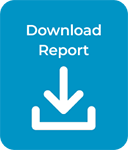Shadow Board sees no change in the OCR in May is warranted
New Zealand Institute of Economic Research (Inc)
Media Release, 10 am Monday, 20 May 2024
For immediate release
The NZIER Monetary Policy Shadow Board recommends the Reserve Bank of New Zealand (RBNZ) keep the Official Cash Rate (OCR) at 5.50 percent in the upcoming Monetary Policy Statement on 22 May 2024. While there is consensus across the Shadow Board members that annual CPI inflation is continuing to ease, the persistence of high domestic inflation remains a concern. Because of this, the Shadow Board believes the OCR should remain unchanged in May. One member also pointed out that the RBNZ should keep the OCR hold in May, given the uncertainty over the Government’s Budget.
Regarding where the OCR should be in a year’s time, the Shadow Board’s core view was an easing in the OCR was appropriate, with the majority picking an OCR ranging between 4.50 percent and 5.25 percent. This reflects the consensus that inflation pressures in the New Zealand economy will continue to fall given the slowing in activity and softer labour market demand in the New Zealand economy, which should provide scope for the RBNZ to lower the OCR. However, a cautious approach by the RBNZ is still needed, given that upside risks to the inflation outlook remain. Overall, this is broadly consistent with our view that the RBNZ should start reducing the OCR from mid-2025.
Figure 1 Majority views are for an easing in the OCR in a year’s time
% strength of policy preference on stance RBNZ should take

Source: NZIER Monetary Policy Shadow Board
Figure 2 Individual participants’ recommended rate settings – 15 May 2024

Source: NZIER Monetary Policy Shadow Board
Table 1 Participant comments
Participants' comments are optional
| Stephen Toplis | Our broad view of the world is again unchanged. We have a downside bias for rates, which builds strongly over the next twelve months, but equally, we think it is extremely likely that there will be no change in rates at the upcoming meeting. |
| Viv Hall | Recent modest easing in headline CPI inflation is welcome, but non-tradables inflation remains a major concern. So, there is no case for a reduction in the OCR for some considerable time. Upside risks also continue, and key components of non-tradables inflation have not been sufficiently responsive to demand-side deflationary pressures; demand-side monetary policy needs to receive greater support from supply-side and structural adjustment policies. |
| Kirk Hope | No comment. |
| Jarrod Kerr | Headline inflation is moving in the right direction. But domestically generated inflation is running too hot. Imported inflation is coming off quickly, but we have an awkward outlook domestically. Households and small businesses are struggling with very restrictive monetary policy. Employment intentions, or demand for labour, are easing when the supply, with rapid migration, is surging. Anyone who took a first-year economics course will tell you when demand falls, as supply rises, the price falls. Wage growth is easing and will continue to ease into next year. RBNZ rate cuts are needed in the rebalancing. |
| Arthur Grimes | Rates should stay unchanged for now, given the persistence of domestic inflation pressures. Inflation pressures should be falling over the coming months, so some gradual reduction is likely to be warranted over the next year – though there is still the risk of an unpleasant upside surprise. |
| Kelly Eckhold | Inflation remains sticky, and the extent to which this continues and is assisted by an easing in the labour market will be key in determining how quickly easing proceeds in 2025. |
| Dennis Wesselbaum | Inflation (4% p.a.), and especially non-tradable inflation (5.8% p.a.), is still far too high. However, real activity is slowing (unemployment and underutilisation are increasing). Overall, and given the uncertainty around the fiscal budget coming out at the end of this month, I see no reason to change the OCR in either direction. |
| Brooke Roberts | No comment. |
| Kerry Gupwell | There should be no change to the OCR for the moment, but I believe the pressure for a cut is building as the economy continues to remain weak. I expect unemployment to rise in the coming months as businesses struggle to keep their workforce in place due to falling demand and what appears to be continued hesitancy in some sectors to initiate/progress projects, awaiting key policy decisions from the government, such as the RMA and the Fast Track Approvals Bill. |
About the NZIER Monetary Policy Shadow Board
NZIER’s Monetary Policy Shadow Board is independent of the Reserve Bank of New Zealand. Individuals’ views are their own, not those of their respective organisations. The next Shadow Board release will be Monday, 8 July 2024, ahead of the RBNZ’s Monetary Policy Review. Past releases are available from the NZIER website: www.nzier.org.nz.
Shadow Board participants put a percentage preference on each policy action. Combined, the average of these preferences forms a Shadow Board view ahead of each monetary policy decision.
The NZIER Monetary Policy Shadow Board aims to:
• encourage informed debate on each interest rate decision
• help inform how a Board structure might operate
• explore how Board members could use probabilities to express uncertainty.
For further information, please contact:
Ting Huang, Senior Economist
ting.huang@nzier.org.nz, 027 266 0969
Share this
Related publications

Shadow Board recommends the Reserve Bank should keep the OCR on hold in February

Shadow Board recommends no change to the OCR in July

